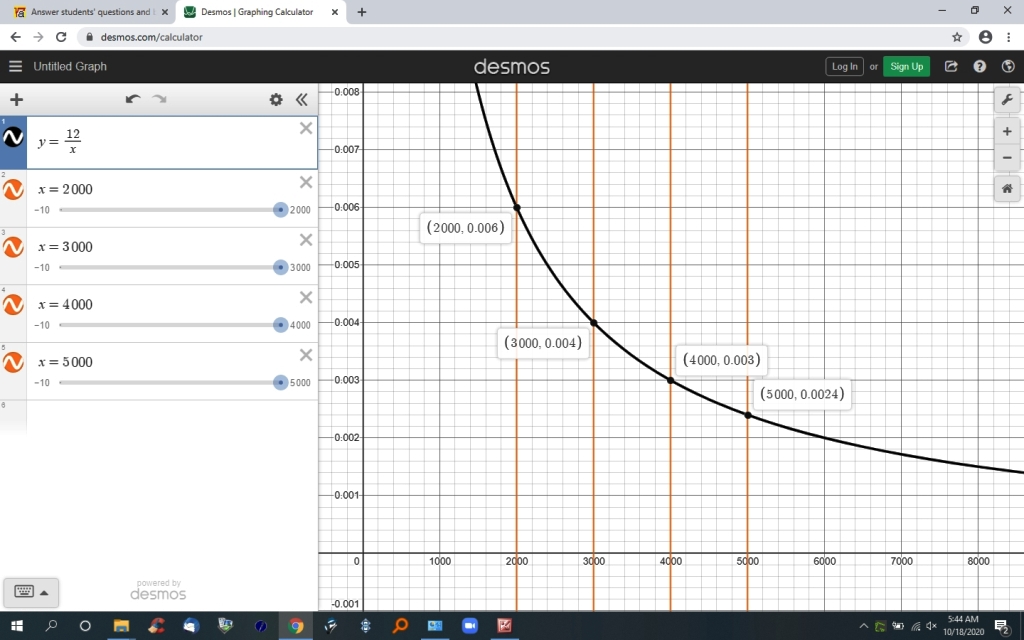SOLUTION: The electric l (in amperes) passing through a resistor is related to the voltage V across a resistor (in volts) and the resistance R (in ohms) by formula l=V/R, if the resistor is
Algebra.Com
Question 1167545: The electric l (in amperes) passing through a resistor is related to the voltage V across a resistor (in volts) and the resistance R (in ohms) by formula l=V/R, if the resistor is connected across the terminals of a car by battery (12volts), construct a table of values of current across the resistor for different resistor values from 2,000 ohms to 5,000 ohms. Use the intervals of 1,000 ohms. Plot these values in the cartesian plane and connect the point.
Answer by Theo(13342) (Show Source): You can put this solution on YOUR website!
the equation is I = V / R
to graph, i changed I to y and R to x
the equation became y = V / r
since V was always 12, i changed it again to get:
y = 12 / x
that's the equation i graphed from x = 0 to x = 5000.
i marked the points (12,2000), (12,3000), (12,4000), (12,5000).
those points correspond to y = 12/2000, y = 12/3000, y = 12/4000, y = 12/5000, y = 12/6000.
since y represents I and x represents R, the equation is really I = 12 / R, where R = 2000, 3000, 4000, 5000.
y represents I and I represents the current through those selected values of R which represented by x.
as you can see, the greater the resistance at the same voltage, the smaller the current.
I is measured in amperes, V is measured in volts, and R is measured in ohms.

one sample calculation is shown below for x = 5000
y = 12 / 5000 = = .0024
the coordinate point of (x,y) is equal to (5000,.0024).
that means the value of y is equal to .0024 when the value of x is 5000
that means the current is .0024 amperes when the voltage of 12 volts is divided by a resistance of 5000 ohms.
RELATED QUESTIONS
The electric current I (in amperes) passing through a resistor is related to a voltage V... (answered by ikleyn)
the electric current I(in amperes passing through the resistor is related to the voltage... (answered by Theo)
for a resistor in a direct circuit that does not vary its resistance, the power that a... (answered by ankor@dixie-net.com)
in a series circuit, the voltage drop across a resistor is directly proportional to the... (answered by stanbon)
Ohm's law states that V=IR for a simple circuit, where V is the total voltage, I is the... (answered by ikleyn)
Electronics, according to Ohm's law, E = IR, where "E" is
voltage (measured in volts),... (answered by indra89811)
The power that a resistor must dissipate is jointly proportional to the square of the... (answered by ankor@dixie-net.com)
Solve.
The power that a resistor must dissipate is jointly proportional to the... (answered by Alan3354)
THE ELECTRIC CURRENT I, IN AMPERES, IN A CIRCUIT VARIES DIRECTLY AS THE VOLTAGE V. WHEN... (answered by stanbon)
